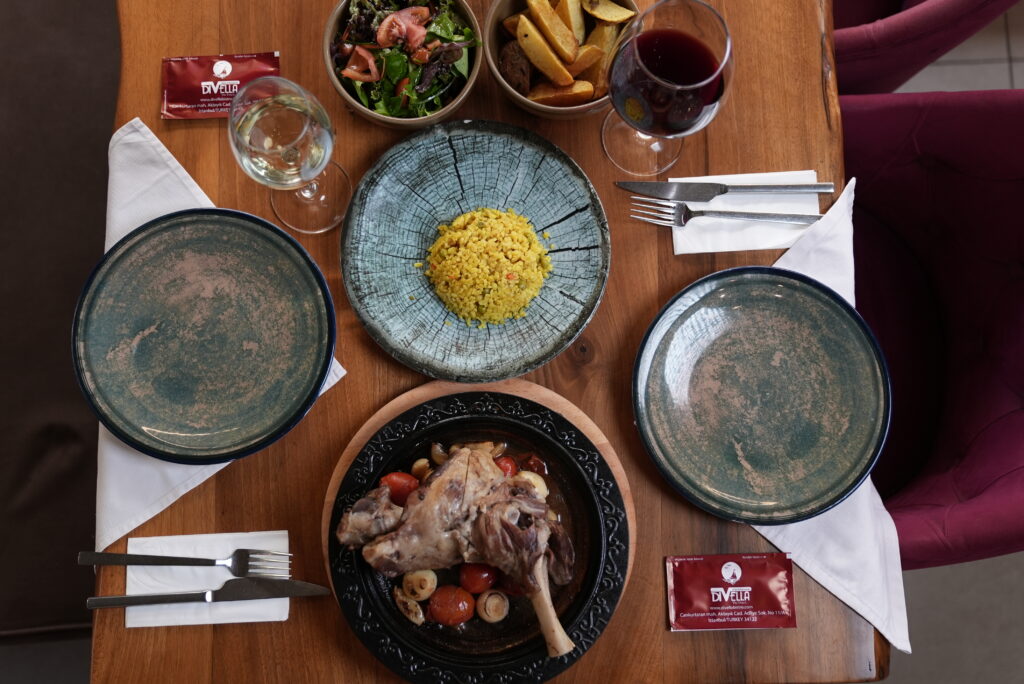Turkish cuisine is a vibrant tapestry of flavors, deeply rooted in history and geography. While its reputation often rests on the delectable array of mezes and sweet pastries, the heart of Turkish culinary tradition lies in its rich meat and tandoori dishes. These dishes, perfected over centuries, showcase a deep respect for ingredients and a mastery of slow cooking, often in traditional clay ovens known as “tandoors.”
The use of lamb and beef is central to Turkish meat dishes. Unlike many other cuisines that rely on a single cut, Turkish cooking celebrates every part of the animal, from tender kebabs to hearty stews. The preparation often begins with simple, yet effective marinades, typically involving olive oil, yogurt, and a blend of spices like paprika, cumin, and red pepper flakes. This process not only tenderizes the meat but also infuses it with a depth of flavor that is truly unique.
One of the most iconic examples of Turkish meat cuisine is the kebab. While “kebab” is a broad term that can refer to any grilled meat, the most famous variations include:
Adana Kebab: A fiery and flavorful minced lamb kebab, hand-kneaded with red pepper flakes and tail fat, then grilled on a wide skewer. The result is a juicy, slightly spicy delight.
Urfa Kebab: A milder cousin to the Adana, made with minced lamb, but seasoned with black pepper and paprika, offering a more subtle and earthy flavor profile.
Şiş Kebab (Shish Kebab): Tender cubes of marinated lamb or beef, skewered with vegetables like tomatoes, bell peppers, and onions, then grilled to perfection.
Beyond the grill, slow-cooked meat dishes hold a place of honor. “Hünkar Beğendi” (Sultan’s Delight) is a regal dish featuring tender cubes of lamb or beef stewed in a rich tomato sauce, served over a velvety, smoky eggplant purée. The smoky flavor comes from grilling the eggplant over an open flame before mashing it with milk, butter, and cheese. Another classic is “Tandır Kebab,” where a whole lamb or leg of lamb is slow-cooked for hours in a tandoor until the meat is incredibly tender, falling off the bone.
The tandoor, or “tandır” in Turkish, is a crucial element in this culinary heritage. This cylindrical clay oven, heated by charcoal or wood, reaches extremely high temperatures, creating a unique cooking environment. The radiant heat from the walls of the tandoor cooks food evenly while the high temperature seals in juices, resulting in an exceptionally tender and moist texture. The most famous tandoori dishes include:
Tandır Kebab: As mentioned, this dish is a testament to the tandoor’s ability to transform a tough cut of meat into a succulent masterpiece.
Tandır Ekmeği (Tandoor Bread): Flatbreads are slapped onto the inner walls of the tandoor, where they puff up and develop a delicious, slightly charred crust and a soft, chewy interior. This bread is the perfect accompaniment to any meat dish, used to scoop up sauces and absorb flavors.

The rich meat and tandoori dishes of Turkish cuisine are more than just food; they are an expression of hospitality and tradition. They represent a deep-seated connection to the land and a history of communal feasting. From the bustling streets of Istanbul to the quiet villages of Anatolia, these dishes continue to be the centerpiece of family gatherings and celebrations, offering a warm and hearty welcome to all who sit at the table. To truly understand Turkish culture, one must first taste the richness of its meat and the smoky perfection of its tandoori creations.


Çok güzel ve harika bir restorant gerçekten yemekler enfes lezzetli bayıldım
Türk kültürnü içlerimizde hsseddik atmosferi bizi geçmişe götürdü geri getirdi başarılar
Kesinlikle Türk mutfağının lezzeti bambaşka etinin lezzeti kebeplari ve tandır lezzetleri ile damakta öyle bir tat bırakıyor ki vazgeçilmez bir lezzet